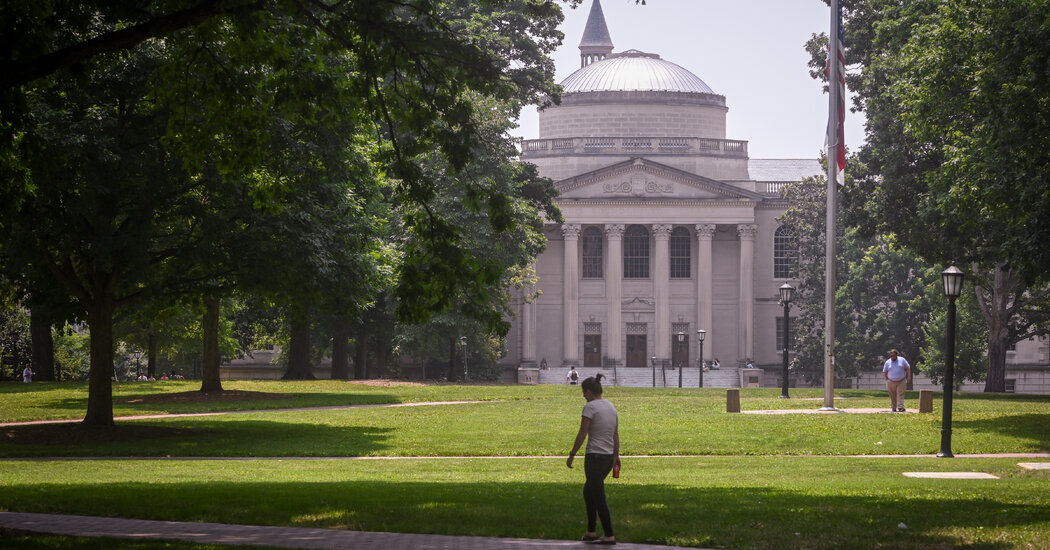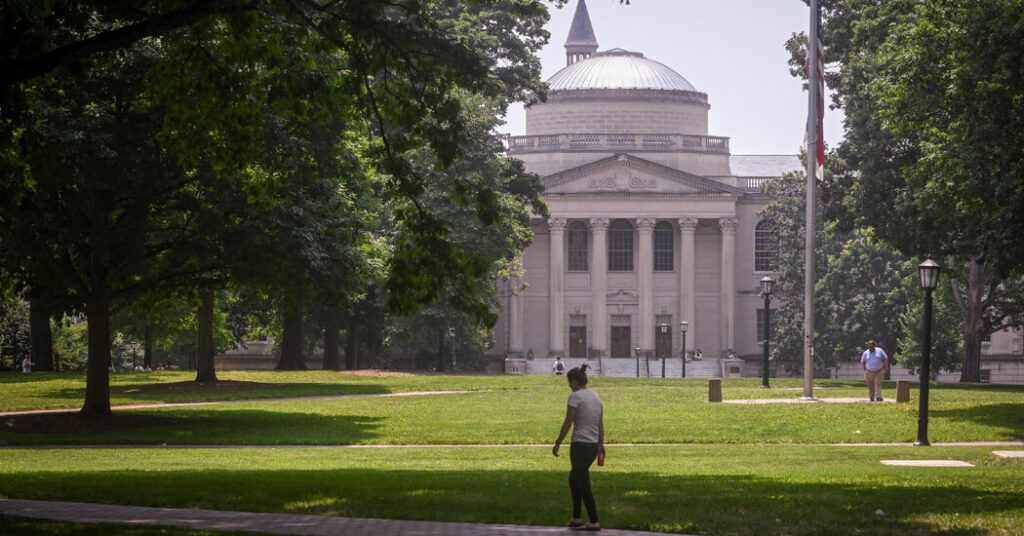
Fourteen months later The Supreme Court struck down affirmative action At the University of North Carolina at Chapel Hill, the university on Thursday reported a sharp drop in enrollment of new black and Hispanic students compared to a year earlier.
Last fall, black students made up 10.5 percent of new enrollees at UNC, and Hispanic students represented 10.8 percent of the incoming class.
But new figures from Chapel Hill show that the number of black first-year and transfer students dropped by more than 25 percent for this academic year. The number of new Hispanic students dropped by about 7 percent.
“It’s too soon to see trends with only one year of data,” Rachel Feldman, UNC’s vice provost for enrollment, said in a statement. “We are committed to following the new law.”
Black students who enrolled this semester now make up 7.8 percent of the 5,624 freshmen. Hispanic students make up 10.1 percent of the class. Students who identify as Asian or Asian American make up about 26 percent of this year’s entering class, a percentage point increase from last year.
A Supreme Court decision last summer to significantly curb the use of race in admissions shook higher education, and forced admissions offices from coast to coast to rethink their processes. But the cases before the justices focused on just two schools, one private and one public, both with extraordinary pedigrees: Harvard, the nation’s oldest university, and North Carolina, which in 1798 became the first public university in the United States. degree
The group that brought the cases, Students for Fair Admissions, accused UNC of using illegal, intentional discrimination and racial preferences instead of “available race-neutral options capable of achieving student diversity.”
Although racial quotas were not used in UNC’s admissions process, university records show that the process allowed admissions officers to award “pluses” related to an applicant’s race or ethnicity “based on individual circumstances disclosed in the student’s application.” University guidelines state that an applicant’s race and ethnicity do not guarantee admission.
The university argued that its approach, which a federal judge initially upheld, was aligned with years of Supreme Court precedent and that its admissions program was designed to promote academic diversity.
But Chief Justice John G. Roberts Jr. and the rest of the court’s conservative supermajority rejected both the Harvard and UNC programs in a single opinion. The chief justice wrote that the admissions system “necessarily uses race in a negative manner, involves racial stereotyping and lacks meaningful endpoints.”
After the decisions, UNC’s provost, J. Christopher Clemens said the university “will make admissions decisions based on achievement, character traits or other criteria that do not serve as a proxy for race.”
The figures revealed by other schools in the opening weeks of this academic year Mixed effects Supreme Court decision.
In recent years, Black, Hispanic, Native American, and Pacific Islander students, for example, have made up about a quarter of undergraduates at the Massachusetts Institute of Technology. Also The university said That students who identified as members of those ethnic groups only made up about 16 percent of the class enrolled for the fall semester.
Amherst College said the share of new black students this school year dropped 8 percentage points compared to last year. But the University of Virginia reported a very small shift, less than a percentage, and Yale University reported no change.
Results for Hispanic and Asian American students also varied. MIT said 47 percent of its freshman class was Asian American, up from 40 percent last year. But at Yale, where about 30 percent of last year’s entering class identified as Asian American, this year 24 percent did.
Hispanic students made up fewer freshman classes at MIT and Amherst, for example, dropping from 12 percent to 8 percent at Amherst, but made up a larger portion of classes at Tufts, Virginia, and Yale.
Universities are expected to revise admissions standards in the coming years, and opponents of affirmative action have insisted that those changes will make any changes in the demographics of the student body fleeting. But university officials and others have warned that those adjusted admissions processes could be slow in coming and lead to significant setbacks for students of color.
UNC raised the possibility that the Department of Education Troubled rollout A redesigned financial aid form may affect enrollment. The university admitted, however, that it “does not know the extent to which these issues were present in its applicant pool.”
At UNC, the share of white students increased by one-tenth of a percentage point. The percentage of students identifying as American Indian or Alaska Native dropped from 1.6 percent last year to 1.1 percent. And students who said they were Native Hawaiian or other Pacific Islander rose from one-tenth of a percentage point to 0.3 percent.
Post UNC reports declining black and Hispanic enrollment appeared first New York Times.
